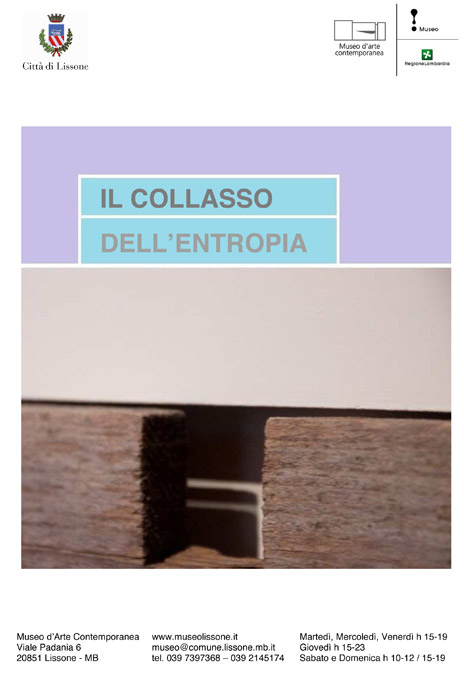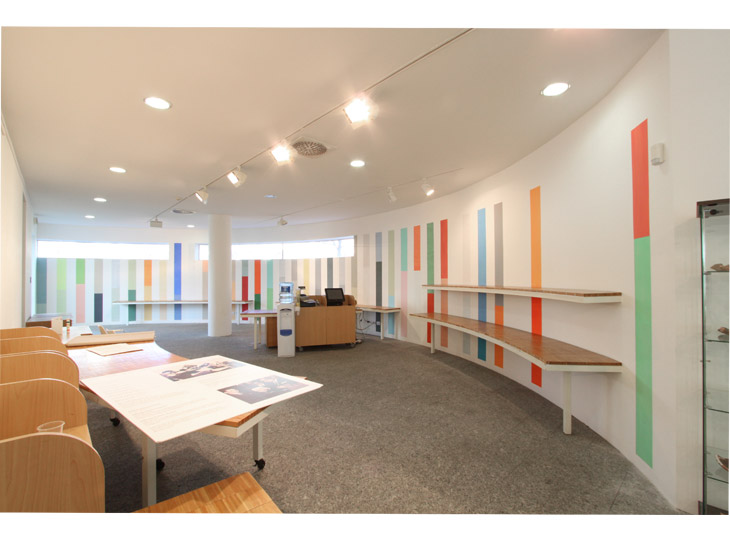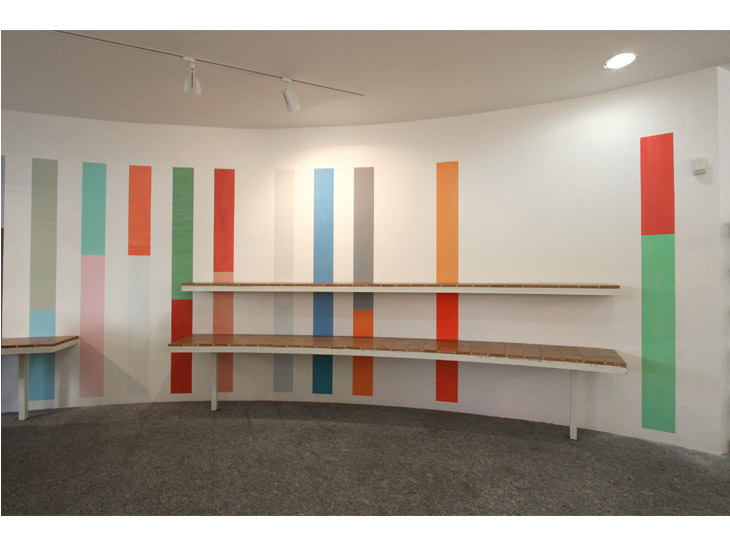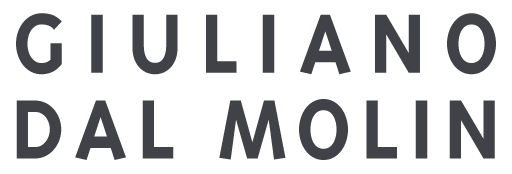
The collapse of entrophy was devised as an “expansive and ephemeral collection” to enhance the permanent collections at the MAC. The aim is to transform the whole museum into an exhibition space, namely an area in which users can experience the entire architectural complex. Corridors, stairways, bookshops, terraces, columns and windows will become integral parts of this wide-ranging project, which becomes part of the normal artistic planning. A rich and varied offering of works, installations and collateral interventions will transform the museum into a vast container that, from now on, will no longer be restricted only to temporary exhibitions. The initiative has been joined by over twenty artists, who have loaned their works for the whole of 2014. Luigi Carboni [Pesaro, 1957] and Gabriele Arruzzo [Roma, 1976] are present with pictures particularly representative of their technical-poetic language. Jack Sal [Waterbury, 1954], Fausto Gilberti [Brescia, 1970] and Giuliano Dal Molin [Schio, 1960] have decided to create pictorial interventions relating to the very architecture of the MAC; the wall-painting by Dal Molin aims to redefine the space and the visual perception of the bookshop while the work by Sal is in homage to the Ring/ Rings/Ring exhibition on the second floor of the museum; Gilberti has, on the other hand, spread his works among the niches, interstices and columns of the building, forcing spectators to “hunt down” his spindly figures. The site-specific interventions include those by Giovanni Termini [Assoro, 1972], who manipulated the stair columns with tie-rods, and Stefano Serusi [Alghero, 1980], who dematerialised the physicality of a shelf by applying the backs of some folders directly onto the ground floor walls. There are also some very varied installations: Before it is too late by Jacopo Mazzonelli [Trento, 1983] questions technological cemeteries proposing the last “breath” of a cathode ray tube; the sound installation by Michele Spanghero [Gorizia, 1979] seeks and creates a synthesis between visual and acoustic art; Ivana Spinelli [Ascoli Piceno, 1972] presents an abstract of Baustelle, a project recently exhibited in Belgrade which investigates the design and construction of a house; the video installation by Fabrizio Prevedello [Padua, 1972] focuses on the “grafts” that the artist has created since 2010 to the present day within disused quarries; Adriano Persiani [Bologna, 1972] has sewn together nappies to recreate the suit of an “incontinent” Gilles, a famous character in French comedy, as well as protagonist of Watteau’s famous painting. In the field of sculpture, we find a small but precious galvanised bronze casting by Arnold Mario Dall’O [Lana, 1960], portraying a hieratic anthropomorphic figure, and Travasi with which Paolo Grassino [Turin, 1967] creates an encounter/clash between human anatomy and common utensils. Garden gnomes are also spread across various parts of the museum, covered with cement by Luca Coser [Trento, 1965] to conceal their identity. The expanded collection also boasts the window decals of the “In Vitro” cycle, which are enriched by two new works, designed by Robert Gligorov [Kriva Palanka, Macedonia, 1960] and Diango Hernández [Sancti Spiritus, Cuba, 1970], to enhance those commissioned last year from Anton Kehrer [Linz, 1968], Igor Eškinja [Rijeka, 1975] and Michelangelo Consani [Livorno, 1971]. During the year, the expanded collection will be exhibited along with other works and new installation interventions, designed specifically for MAC Lissone.



